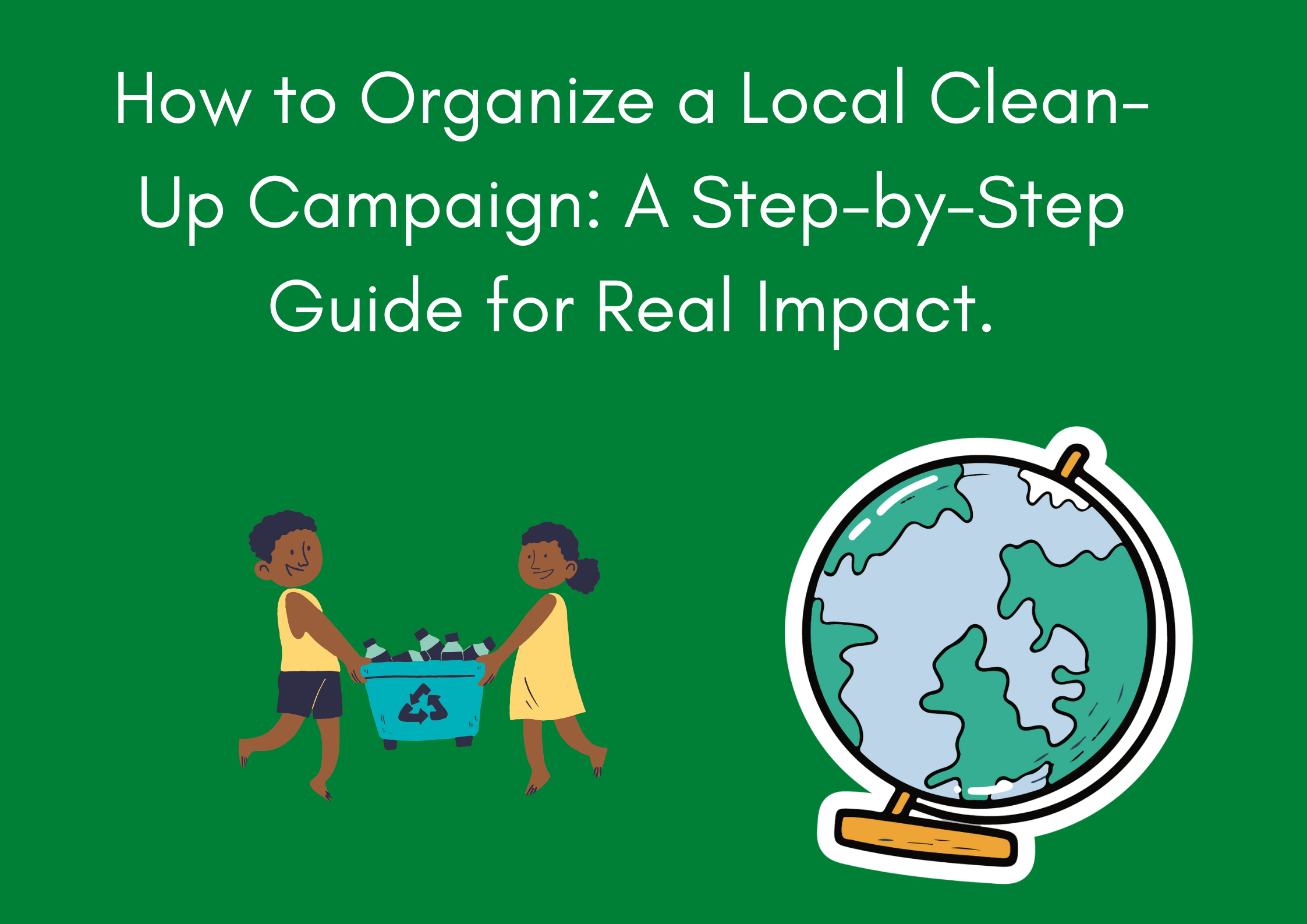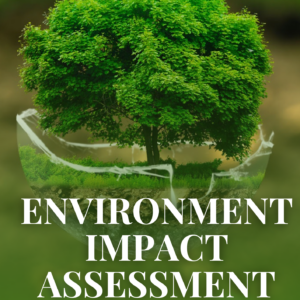Ever walked past a park, riverbank, market or roadside in your neighborhood and thought, “Someone should clean this up”? Well, what if that someone is you?
Organizing a local clean-up campaign is one of the simplest, most empowering ways to take direct action for your community and the environment. Whether it’s picking litter off a beach, cleaning up a nature trail, or clearing garbage from storm drains in your estate, your effort matters.
And the best part? You don’t need to be a politician, celebrity, or NGO to make it happen. All you need is a little planning, a few people, and a lot of heart.
This step-by-step guide will walk you through how to organize a successful clean-up campaign; from idea to execution, even if you’re doing it for the first time.
Why Local Clean-Up Campaigns Matter
Before we dive into the “how,” let’s talk about the “why.”
Litter is more than an eyesore. It:
- Harms wildlife (animals eat or get tangled in plastic and waste)
- Pollutes rivers and oceans
- Blocks drainage systems (leading to urban flooding)
- Spreads disease and affects public health
- Reduces the aesthetic and economic value of an area
In Kenya and many other countries, solid waste mismanagement is a growing urban and rural problem. According to UNEP and NEMA, Kenya produces over 22,000 tonnes of waste daily, much of which ends up in the environment due to poor disposal habits and lack of awareness.
But when communities take ownership — things change.
Clean-up campaigns raise awareness, build pride, foster unity, and create visible impact. They also inspire local authorities to act and send a clear message: We care.
Step-by-Step Guide: How to Organize a Local Clean-Up Campaign
1. Choose Your Clean-Up Location Wisely
Start by identifying a location that:
- Is heavily littered or in need of beautification
- Is accessible and safe for volunteers
- Has permission from landowners or local authorities
Examples: local markets, riverbanks, beaches, school compounds, town centers, drainage channels, road reserves.
Pro tip: Start small and local. It’s better to fully clean one area than to spread too thin.
2. Get the Necessary Approvals and Notify Authorities
For public spaces, it’s important to inform or partner with:
- Your County Government or Ward Administrator
- The National Environment Management Authority (NEMA), for guidance and support
- Local chiefs, elders, or community-based organizations
Why this matters:
- They can provide logistical support (e.g., waste pick-up trucks, bins)
- It avoids legal issues or misunderstandings
- They may even help mobilize more volunteers and create awareness.
3. Set a Date and Timeline
Choose a date that gives you enough time to plan, mobilize, and promote, typically 2–4 weeks out.
Things to consider:
- Avoid rainy seasons
- Weekends or public holidays are best for higher turnout
- Set clear start/end times (e.g., 8 AM – 12 PM)
Also think about backup dates in case of bad weather.
4. Plan the Logistics
Once the location and date are set, create a plan covering:
Supplies needed:
- Trash bags (preferably biodegradable)
- Gloves (durable or disposable)
- Rakes, brooms, spades, wheelbarrows
- Safety vests or T-shirts for volunteers (optional but motivating)
- Drinking water and snacks
Waste management:
- Will you separate plastics, glass, and organic waste?
- Who will collect the trash afterwards (county, recycling center, etc.)?
Safety measures:
- First aid kit on site
- Briefing volunteers on hazards (e.g., sharp objects, insects, heat)
5. Mobilize Volunteers
You don’t need 100 people, even 10–20 dedicated volunteers can make a big difference. Start with your circles:
- Family and friends
- Neighbors and church groups
- Youth groups and schools
- Local businesses and NGOs
Promotion ideas:
- WhatsApp groups and community forums
- Social media (Instagram, Twitter/X, Facebook events)
- Posters and word of mouth
Tip: Create a catchy campaign name and hashtag (e.g., #CleanUpMtaani or #CleanYourTown).
6. Promote with Purpose
Don’t just ask people to come, show them why it matters. Share photos of the dirty area. Talk about the risks of poor waste management. Show how a clean-up can bring real change.
Include in your promotion:
- Date, time, location, meeting point
- What to bring (gloves, hat, water, etc.)
- Contact person and number
- Any rewards (T-shirts, certificates, refreshments)

7. Host the Clean-Up Event
On the day of the clean-up, make sure to:
- Arrive early and set up
- Welcome and brief volunteers
- Distribute tools and assign zones
- Capture before-and-after photos
- Ensure safety (hydration, sunscreen, proper lifting)
Encourage teamwork and a positive spirit. Play music. Share your story.
8. Dispose of the Waste Properly
Partner with your local county or private waste management service to collect the trash once the clean-up is done.
If possible:
- Sort recyclables and non-recyclables
- Store recyclables for drop-off at a recycling center
- Compost organic waste (leaves, food scraps) if feasible
This is where many clean-up campaigns fall short, don’t just pile up trash elsewhere. Make sure it’s collected and processed.
9. Celebrate, Thank, and Share.
After a successful event:
- Thank every volunteer (personally, via text, or on social media.)
- Share before/after photos with the community
- Highlight what was achieved (e.g., “We collected 400 kg of waste!”)
- Tag local authorities or partners who helped
Bonus: Offer appreciation certificates or awards , they go a long way in encouraging future participation.
10. Follow Up and Keep the Momentum
After your campaign:
- Keep in touch with volunteers, form a WhatsApp group
- Plan regular clean-ups (monthly, quarterly, etc.)
- Advocate for permanent bins or signage in cleaned areas
- Involve schools or businesses for sustained impact
A one-time clean-up is great, but ongoing community action is what creates real, lasting change.
Optional Add-Ons to Enhance Your Campaign
Want to go the extra mile? You can:
- Include a short awareness talk about waste management
- Invite local leaders or media for publicity
- Distribute flyers or stickers on “Don’t Litter” “Recycle, Reuse, Reduce”
- Partner with schools for an art or essay competition on cleanliness
The goal is not just to clean, but to educate, inspire, and shift behavior.
Final Thoughts: Be the Spark of Change
You don’t need to wait for a government program or an NGO to fix your neighborhood. As a citizen, you have the power to lead change right where you are.
Organizing a clean-up campaign is a beautiful, hands on way to show care for your environment and community. And when others see you act, they’re more likely to join in next time.
So go ahead, pick a spot, rally your crew, and clean it up. Let your campaign be the spark that sets a cleaner, greener, and more united community in motion.





